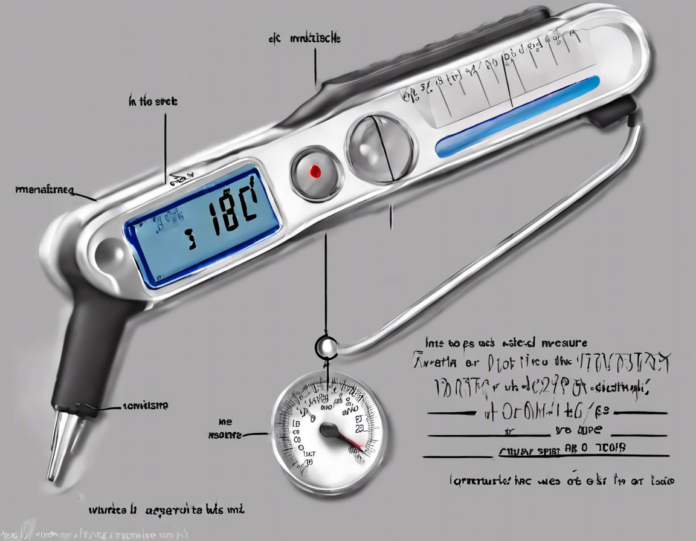When it comes to measuring temperature, thermometers are indispensable devices used in various industries, healthcare settings, scientific research, and everyday applications. Thermometers come in different types, each with its own advantages, limitations, and ideal use cases. In this article, we will delve into the world of thermometers, exploring various types and their functionalities to enhance your understanding of these essential temperature-measuring instruments.
Mercury Thermometers
Mercury thermometers have been a common sight in households and medical settings for decades. These thermometers consist of a glass tube filled with mercury, which expands or contracts based on temperature fluctuations. Mercury thermometers offer accurate readings and a wide temperature range, making them suitable for various applications. However, due to the toxic nature of mercury, there are increasing concerns about environmental and health risks associated with these thermometers.
Digital Thermometers
In recent years, digital thermometers have gained popularity due to their convenience, speed, and accuracy. These thermometers use electronic sensors to measure temperature and display readings digitally. Digital thermometers can provide quick results, making them ideal for home use, medical settings, and food industry applications. Moreover, many digital thermometers come with features such as memory recall and fever alarms, adding to their practicality.
Infrared Thermometers
Infrared thermometers, also known as laser thermometers, measure temperature from a distance by detecting the infrared energy emitted by an object. These thermometers are non-contact, making them suitable for measuring temperatures of moving objects, electrical components, or hazardous materials. Infrared thermometers are widely used in industries such as manufacturing, automotive, and aerospace, where traditional thermometers may not be practical or safe to use.
Thermocouple Thermometers
Thermocouple thermometers utilize two dissimilar metal wires joined at one end to measure temperature. When there is a temperature difference between the two ends, a voltage is produced, which is proportional to the temperature. Thermocouple thermometers are versatile, offering a wide temperature range and fast response times. These thermometers are commonly used in industrial settings, laboratories, and HVAC systems due to their durability and accuracy.
Thermistor Thermometers
Thermistor thermometers use thermistors, which are temperature-sensitive resistors, to measure temperature. These thermometers operate based on the principle that the resistance of a thermistor changes with temperature. Thermistor thermometers are known for their high sensitivity and accuracy, making them ideal for applications requiring precise temperature measurements, such as medical diagnostics, environmental monitoring, and food processing.
Liquid Crystal Thermometers
Liquid crystal thermometers contain heat-sensitive liquid crystals that change color based on temperature variations. These thermometers are easy to use, affordable, and suitable for quick temperature checks. Liquid crystal thermometers are often used for educational purposes, in-home aquariums, or as forehead strips for fever monitoring. While not as precise as some other types of thermometers, they provide a visual indication of temperature changes.
FAQs about Thermometers
1. What is the best type of thermometer for home use?
For home use, digital thermometers are highly recommended due to their ease of use, accuracy, and quick results. They are versatile and suitable for various applications, including measuring body temperature, room temperature, or food temperatures.
2. Are infrared thermometers safe to use on humans?
Yes, infrared thermometers are safe for measuring human body temperature. They are non-contact devices that provide quick and hygienic temperature readings, making them ideal for medical settings, especially during pandemics or infectious disease outbreaks.
3. Can mercury thermometers still be used?
While mercury thermometers are accurate, there are growing concerns regarding their environmental impact and health risks. Many countries have phased out the use of mercury thermometers, promoting safer alternatives like digital thermometers or infrared thermometers.
4. How do thermocouple thermometers differ from thermistor thermometers?
Thermocouple thermometers use two metal wires to measure temperature based on voltage, offering a wide temperature range. On the other hand, thermistor thermometers use temperature-sensitive resistors for high sensitivity and accuracy in a more limited temperature range.
5. Are there any safety precautions to consider when using thermometers?
When using thermometers, especially in medical or industrial settings, it is essential to follow safety guidelines to prevent injuries or contamination. Regular calibration, proper handling of mercury thermometers, and maintaining cleanliness for contact thermometers are some basic safety measures to consider.
In conclusion, thermometers play a crucial role in various sectors, providing essential temperature measurements for numerous applications. Understanding the different types of thermometers, their functionalities, and ideal use cases can help you choose the right thermometer for your specific needs. Whether you are monitoring body temperature, conducting experiments, or ensuring food safety, having the right thermometer can make a significant difference in accuracy and efficiency.

